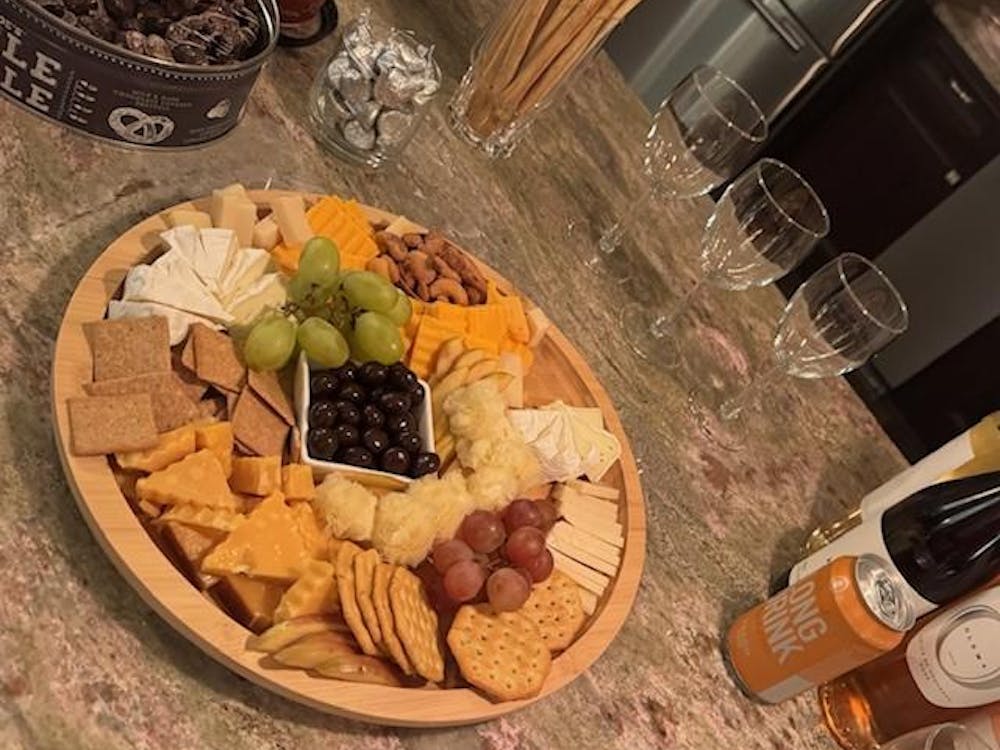Wingspread Lane. Broken Sun Road. Hungrytown Hollow. Though these may sound like fictitious names in a silly children's story, in reality, they are names of the winding, gravel-packed roads of Covesville, Va.
Not incorporated as any type of township, Covesville is a seemingly boundary-less entity with its only measurable borders the surrounding Blue Ridge Mountains.
"Covesville is sort of a state of mind, says Marcy Orr, local resident and minister of Cove Presbyterian Church. "It doesn't really have a beginning and an end. There's no line."
Yet with a population of 250, the community, whose original foci were a Presbyterian Church and surrounding farms, has the appeal of small town America as yet uncorrupted by commercialization.
The stamp-sized post office is situated in front of the crumbling foundations of an ancient vinegar press.
Next door, the Covesville Country Store is receiving new life as an antiques store from owner Judith Guarini. A charming array of Model T tires, wooden barrels and an ancient cash register already has amassed along the store's wrap-around porch.
Here, residents identify houses not by street numbers, but by landmarks such as "cattleguards."
And neighbors are just as quick to point a group of out-of-place strangers in the right direction as they are to invite them into their homes.
But the narrow valley that wedges Covesville between the mountains is more than an idealized version of old-fashioned simple living.
The weathered wooden fences that surround Covesville's farms and the long, twisting roads turn the spot into a separate continent unto itself, a place where time moves in fits and spurts, and only when it has to.
Local color
Settled in the 1740s by a band of Scotch-Irish immigrants, the Shenandoah valley is seeped in history and lore as thick as its bear-populated woods.
Marcy Orr knows it all. Or most of it, anyway.
Harvard educated and holding a Ph.D. from the University in the New Testament, the Cove Presbyterian minister compiled Covesville's history for the church's 220th anniversary.
|
Orr never thought she would be around to see its 230th and counting.
"It worked out here," she says.
Orr's own church is listed on the National Register of Historic Places. Its congregation, founded in 1769, first worshipped in a log cabin meeting room before the church itself was built in 1809.
These dates, painted above the entryway, look a little odd, though.
"The guy who painted it was a little dyslexic and painted the nine backwards," Orr explains, half-jokingly.
Stately and reserved, the building's combination of red brick and arched windows is a testament to its federalist and neo-gothic architectural roots.
Inside, white-washed pews and walls painted a warm cream tone, offset the church's few adornments. The room conveys a dynamic of strength and simplicity reflective of its minister's personality.
"Excuse me while I step on a wasp," she says matter-of-factly, eyeing the insect crawling across the wood-planked floor. "We have a lady who's very allergic."
Her action, and reasoning behind it, is but a small illustration of Orr's passion for her community's well being. She is striving to create a child-care center in the church's education building, which she says the area "desperately" needs. She laments the loss of the apple orchards, where the unpruned branches grow wild and tangled. When she sees a neighbor's dog jaunting down the road, she offers it a ride home.
Orr also seems to know the names and stories, past and present, behind all her neighbors and parishioners.
"One thing I've found being a minister and talking to people is there's a story out there. You don't have to get lucky to find it, you just have to listen," she says.
And even the road names have a tale to tell.
Take Hungrytown Road for example, another one of those gravel-worn, thread-like "avenues" that snakes its way into muddy Hungrytown Hollow.
Legend has it that both roads earned their names during the Great Depression when hobos would visit the houses in search of food and the residents never had any to offer.
But Orr says she doesn't buy it.
"There are lots of legends about how Hungrytown got its name, and they all sound pretty fake to me," she says. "It was probably named after some man named Mr. Hungry."
Regardless of how the road truly obtained its tag, its residents are as interesting as the moniker.
Lifelong Hungrytown Road residents Walter and Polly Mehring have been building their own home out of the remains of old log cabins since 1974.
"If we ever get nuked back to the Stone Age, Walter will be just fine," Orr says. "He's into primitive technologies."
Though his bamboo hang glider and tanned animal hides are out of sight, evidence of Mehring's talent - like the handmade banjos adorning the living room - pops up all over the picturesque property.
"I can still do things that I can't really do in town," Mr. Mehring says. "I have a little bulldozer that I build ponds with."
The couple says the house isn't yet finished - Mrs. Mehring wants a deck on the back, for one thing - but they wouldn't have it any other way.
"I had no idea what we were getting into, but I love it," Mrs. Mehring says. "I know the history of every log. Our history is up in this house."
A community, divided
At a time when Route 29 was no more than a dirt road and apple orchards quilted the valley, Covesville was a bustling town, boasting four country stores, a train station and 1,000 inhabitants.
The village's livelihood depended largely upon agriculture - and on the exportation of its apples to England.
"The apple we were famous for - and believe it or not, we were famous - was called the Albemarle Pippin," Orr says.
But in the 1920s, when a non-poisonous, but visually unappealing "scab" afflicted the crop of pippins, England declared a halt on their importation, causing a devastating blow to the local economy.
Nearly four decades later, the community took another hit in the early 1960s when Route 29, which runs through the center of Covesville, was overhauled.
"The village that used to be here pretty much got wiped out when they put in the four-lane highway," Orr says.
And now, at a time when the community she both serves and leads faces another threat, she is at the forefront of the struggle to protect it.
New proposals by the Virginia Department of Transportation to turn Route 29 South into a limited access highway require a widening of the road. They call for space that residents say Covesville doesn't have to give.
The construction would wipe out Cove Presbyterian's septic field, making its service to the public virtually obsolete.
It would also destroy Judith Guarini's fledging antiques store. And it would destroy Caul's Grocery, where Mr. Mehring says, "everyone stops to find out what the latest news is."
"It seems like a stupid political boondoggle," says Mr. Mehring, who calls the proposal "just one more gutting" of the valley.
"VDOT already did it to this community when they widened 29," Mrs. Mehring says. "It split the community in two. But if they put the interstate in here it will no longer be a community. I don't know what it will be."
Still, Covesville's name has remained appropriately fitting for a reason.
"Covesville is called the cove because it's the place where the two ridges come closest together," Orr says.
And the tightness of the space seems to be reflective of the tightly knit community.






